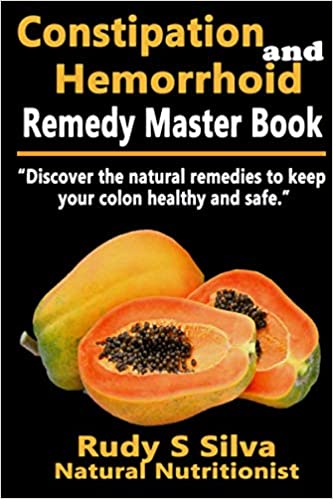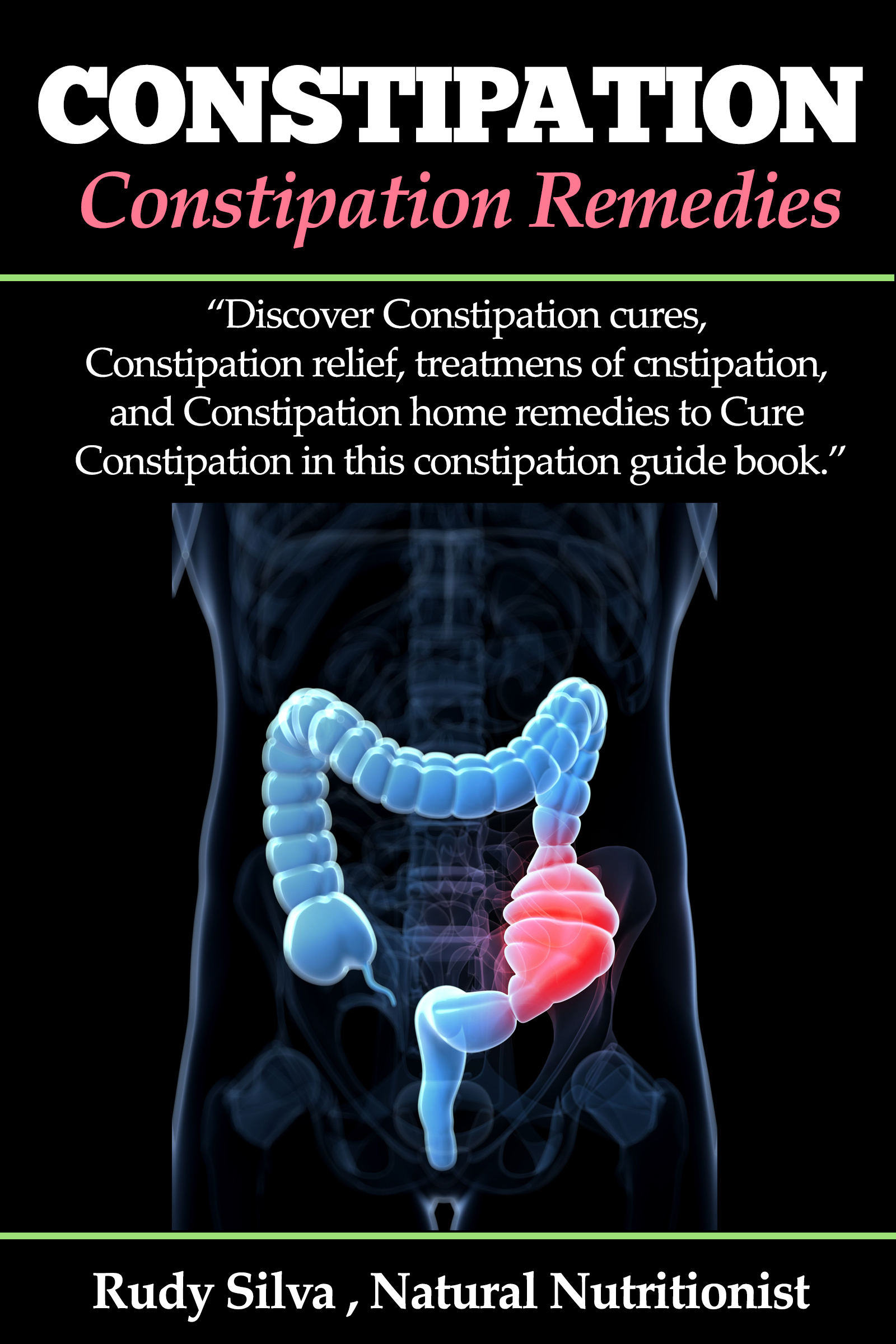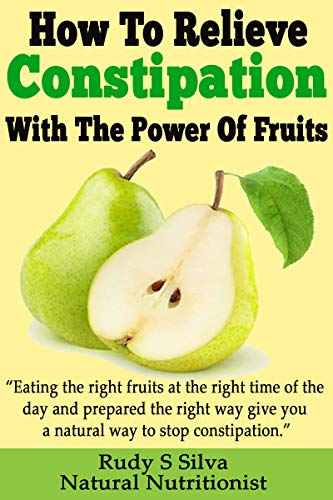The Truth about Using Fiber to Prevent Constipation
What is Fiber?

Fiber is a carbohydrate that comes from the cells walls and structure of plants, grains, legumes, fruits, and vegetables. Most processed or junk food has little fiber, which was removed during processing.
Most people eat around 7-12 grams of fiber each day. You should be eating from 25 – 35 grams each day to prevent serious illnesses in your body.
A diet with 40 grams of fiber provides protection and prevention against diseases such as kidney stones, varicose veins, obesity, heart disease, appendicitis, colon disease, diabetes, appendicitis, diverticulosis, and many others.
When you eat fiber, it passes into your colon without getting digested in the small intestine. The good bacteria will use some of the undigested fiber as food, which makes them stronger and able to multiply.
Eating fiber reduces your fecal matter transit time from 3 days to 1 1/ 2 – 2days.
All processed foods, such as white flour products, have little or no fiber. Fiber is removed when various natural flours or grains are processed to make junk food. During this processing, nutrients, vitamins, and minerals are also removed.
Only plant foods and lightly processed grains have fiber of varying amounts. Foods that are “fortified” with vitamins and minerals are unbalanced since manufacturers cannot replace all the nutrients the food once had.
Fiber, bulk, or roughage, is one of the main nutrients you need to eat daily to relieve and prevent constipation and prevent many other diseases. Fiber is a nondigestible, complex carbohydrate. Most fiber is fermented in your colon and provides some energy for the body. Fiber has two forms – soluble and insoluble.
Soluble Fiber

Soluble Fiber becomes gummy and viscous after it dissolves in water.
Soluble fiber has the ability to slow down digestion in the small intestine and prevent simple sugars from entering the bloodstream right away.
Because it absorbs water, soluble fiber softens and gives weight to fecal matter, and this makes fecal matter easier to pass through your colon.
Soluble fiber consists of pectin, gum, and mucilage. Pectin is found in carrots, apples, beets, cabbage, citrus fruits, and bananas. Gums and mucilage are found in oat bran, sesame seeds, oats, oatmeal, legumes, guar gum, and gum arabic
Besides helping prevent constipation, soluble fiber provides the following benefits.
- reduces the risk of heart disease
- reduces the risk of gallstones
- helps to remove toxic heavy metals and toxins from your colon
- helps to prevent the toxic condition call appendicitis
- regulates movement of sugar into the bloodstream
- helps to prevent hemorrhoids and fissures
- lowers cholesterol
- lowers absorption of fats in the intestines
- and most importantly, help prevent the overgrowth of bad bacteria in your colon.
Insoluble Fiber

Insoluble fiber does not dissolve in water and consists of cellulose, hemicellulose, and lignin. This type of fiber is extremely beneficial to your health. Because your body’s enzymes cannot break down this fiber, like it does food, it remains in tack as it travels through your intestines and colon.
Insoluble fiber helps fecal matter travel faster through the small intestine and your colon.
It provides bulk to your fecal matter. It makes your stools larger, softer, and stimulates peristaltic movement as it touches your colon walls.
Insoluble fiber, like soluble fiber, slows down digestion. It also slows down absorption of protein, starch, and fat and has the ability to inhibit the action of digestive enzymes.
Insoluble fibers are found in vegetables, wheat, and wheat bran. This type of fiber is considered an anti-carcinogen and a digestive aid. It is credited with preventing colon cancer and many other colon diseases.
Cellulose – Insoluble Fiber
Cellulose is a nondigestible carbohydrate which is found in the skins of fruits and vegetables – peas, green beans, carrots, broccoli, beets, brazil nuts, and lima beans.
Cellulose helps to remove cancer-causing toxins from your colon walls. It helps to prevent constipation, colitis, varicose veins, and hemorrhoids.
Hemi-cellulose is found in cabbage, peppers, green vegetables, and beets. The benefits of this fiber are:
- absorbs water in your colon and makes your stools softer
- aids in weight loss
- prevents constipation
- decreases the chances of colon cancer
- controls the carcinogens in the intestinal tract
Lignin – Insoluble Fiber
Lignin is also insoluble fiber. It is found carrots, peas, tomatoes, bran, and green beans.
Fiber is involved in your digestion and can,
- improve nutrient absorption
- increase stool weight
- increase good bacterial activities in the small and large colon
- improve composition of the fecal matter
- Make fecal matter travel faster and easier out the rectum without straining
- absorbs water to create bulk in the fecal matter
- absorb cholesterol and move it out the rectum
- sweep clean your colon walls and remove toxins, waste,
- debris and other contaminants and moves them out your colon.
- provide food for the good bacteria irritate your colon walls to activate peristalsis
Seaweed fiber
Agar and alginate come from seaweed and are indigestible. They are used in gelatinous foods to make desserts. Alginate is especially useful since it can bind to harmful metals such as lead, arsenic, mercury, and cadmium and move them out of your body through your stools.
Eating Fiber
As you can see fiber is a critical nutrient for your colon and overall health. You need to eat equal amounts of insoluble and soluble fiber. Most people only eat around 10 grams or less of fiber each day. The amount you need to eat is around 25 – 35 grams. This is a lot of fiber and you will need to introduce it slowly into your diet. Otherwise, you may experience gas when you eat more fiber.
Health Alert: If you have any serious gastrointestinal illnesses, check with your doctor before adding more fiber to your diet.
One other major benefit of fiber is that fiber stimulates pancreatic secretions – enzymes and bicarbonates – which help you to digest your food better and prevents undigested protein from reaching your colon.
When you are constipated, your fecal matter remains in contact with your colon walls longer. Undigested protein that is embedded in the fecal matter starts to decompose and putrefies. This undigested protein and putrid matter serves to feed bad bacteria and changes your colon environment into a toxic generator.
If you have not been eating a lot of fiber in the form of vegetable, fruits, and grains, you need to add these foods to your eating habits little by little so your body gets used to more fiber.
The more fiber you eat the more vitamins and minerals are lost and eliminated in your stools. What this means, is you need to compensate for this loss by eating more nutritious foods and or by using supplements.
Health Tip: Provide yourself with natural forms of fiber, such as vegetables, fruits, and legumes. Stay away from the supplemental forms of fiber such as, powders or pills that may
help in relieving constipation but do little to provide you with other nutrients those natural forms of fiber provide.
Supplemental fiber granules, powders, or pills can become addictive.
Limit your use of fiber that comes from grains. I know you have been told you need to eat a lot of bran, whole wheat products, cereals, oats, oatmeal, buckwheat, unprocessed bran, rice bran, and so on.
In their book, 2001, Electrical Nutrition, Denise and Shelley Hiestand point out that our digestive system was not designed to process grains. When we eat food, our digestive system was designed to ferment food to break them down and make their nutrients available for our bodies. The Hiestand’s continue,
“Our digestive tract, like that of the grazing animals, is almost completely unable to ferment a seed-head (grain), whether it is whole or ground up as in flour…when we try to eat grain, the innate frequency of the seed-head can only go into storage—in other words, lay down cellulite… This is why in agriculture to fatten up the hog or cattle, we feed them grain. Likewise, if you want to fatten up, eat grains… they take the most
energy to digest, and we get little or nothing from it except large thighs, butts, and bellies. REMEMBER THE OLD FARM SAYING GRAINS FOR GAIN, PROTEIN FOR PRODUCTION. From an electrical nutrition perspective, modern grains could well be considered toxic.”
Health Tip: Limit the use of grains to get your fiber. Make more use of vegetables, fruits, and legumes to get fiber.
However, when trying to clear constipation, fiber from bran can be used for a limited time.
Method 75: Eating Bran
Eating bran is one of the quickest and best ways to increase your fiber. It will increase the weight and size of your stools more than the fiber contained in fruits or vegetables. Bran is the outer husk of the grain – wheat, corn, rice, and oat – which is indigestible.
It does not irritate the lining of the stomach, small intestine or your colon. It is not a laxative but promotes the movement fecal matter through your colon in a natural way. Unlike drugstore laxatives or other natural strong laxatives, bran does not quickly purge out all the contents in your colon.
Use one or two heaping tablespoons of bran in your morning cereal, in your baking, and in your smoothies.
Health Alert: When using bran, make sure you drink plenty of water during the day to keep your stools soft.
Here are some other ways to use bran. You can add them to,
- baked bread, muffins, and other baked goods
- breaded mixes
- hamburger meat
- juices
- pancake or waffle mix
- salads
- scramble eggs
- soups
- soups
- stuffing
- vegetarian burger mix
- yogurt
When you put bran in juices or anything that is all liquid just eat it with a spoon.
How much bran should you take for good bowel regularity? Each person is different. You need to experiment. Start with two teaspoons each day and work towards 10 teaspoons a day or until you have bowel movements without effort or straining.
There are four basic bran products – wheat, corn, oat, and rice. They all provide a solid source of fiber in varying amounts. Make sure the bran you use is 100% unprocessed bran.
Use bran for a few weeks to get your bowel movements back to normal. Eating bran should get your bowels moving in a few days or less.
Once your bowels are back to normal, back off from using a lot of bran and depend more on fiber from eating more fruits, vegetables, nuts, and seeds.
There are many new products, which use bran added to other nutrients or powders. Although these can be useful, use them for a limit time.
Wheat Bran
Many people use wheat bran to get more fiber in their diet. This was something that was encouraged in the past. But now you should limit or reduce the use of bran as a way to get more fiber in your diet.
Wheat bran is not the best bran to use but can be used in combination with oat, rice, or corn bran, which is better.
Wheat bran consists mainly of insoluble fiber. It consists of cellulose, hemicellulose, lignin, pectin, and pentosans. It absorbs plenty of water making the stools bulky and soft, which allows them to move through your colon easily. Bulky fiber stools help to scrub your colon walls to keep them clean of mucus and toxic build up.
There are many more nutritious ways to add fiber to your diet.
Eating any bran requires drinking plenty of water throughout the day otherwise it can cause constipation.
Health Alert: When eating bran in any form, cereal, pancakes, or muffins, always drink extra water during the day. Bran absorbs water and becomes larger. Use water to help move it easily through your colon.
Young children should not eat wheat or rice bran. Eating bran requires drinking plenty of water throughout the day. Eating too much bran can cause the fecal matter to become too bulky and can cause constipation instead of relieving it.
Bran contains a high level of phytates, which interferes with absorption of calcium, zinc, iron, and copper. For this reason, use a maximum of 1/3 of a cup of bran each day for yourself and for children use 1/6 of a cup. Excess use of wheat bran would require taking calcium, zinc, iron and copper supplements.
Bran is also high in B-vitamins and consists of around 21% protein.
Children should not eat as much fiber as adults. Children should eat oat cereal, whole grain cereals, fruits, and vegetables.
Corn Bran
Corn bran has even more fiber than wheat bran by 40%. So, corn bran is excellent to prevent constipation. Both corn bran and wheat bran should be used in moderation and not used as the main ingredient in trying to prevent constipation.
Oat Bran
Oat bran has both soluble and insoluble fiber, which make it better to use than wheat bran. However, it does have less
insoluble fiber than wheat and rice bran. It can be found with relatively little processing which helps to maintain its high quality of protein, carbohydrates, and vitamins.
Health Tip: Keep away of commercially made oat, wheat or another type of bran muffins since they contain a lot of fat, sugar and other additives that are unhealthy for you.
Rice Bran
For preventing constipation, rice bran is better than wheat bran.
In their book called High-Speed Healing, 1991, the editor of
Prevention Magazine Health Books said that,
“You may see a dramatic improvement in your fight against constipation by using rice bran- instead of wheat – to increase the size and frequency of your stools. One European study says that rice beats the living chaff out off wheat when it comes to fecal output and frequency of bowel movements.”
Health Tip: Do not take your calcium supplement with bran cereals since fiber can interfere with calcium absorption.
Do not use cereal with bran in it. This bran has been processed and loses some of its fiber content. Use the bran sold as coarse granules. Add it to your morning cereals, smoothies, shakes, cottage cheese, yogurt, or other dishes.
In his book, Inner Cleansing, 1983, Carlson Wade recommends what he calls, “Morning Bran Booster Tonic”
Cleansing Rewards: The pure bran fiber is propelled by enzymes in the juice to scour and cleanse your
digestive system in the morning. Your cells become washed and are now able to be renewed through the collagen-forming action of “In a glass of fresh vegetable juice, add two tablespoons of nonprocessed whole grain bran. Add a squeeze of lemon or lime juice for a piquant flavor. Blenderize for just 20 seconds and drink slowly right after your breakfast. Vitamin C from fruits
you eat later on. You will experience an inner cleansing and cellular rejuvenation that will make you feel younger than young!”
Soy Bran
Soy bran is not a recommended source of bran. Despite the popularity of soy, there are some effects of soy that are not healthy. Soy is a high source of lignin fiber and other chemicals, which can block absorption of:
- minerals
- protein
- trypsin
Soy also has a high-level of phytoestrogens, which help to reduce the harmful effects of excess estrogen but soy products are not good for children who do not need high-level phytoestrogens.
Soy used fermented – miso or tempeh –is an excellent food but still have traces of chemicals that block the body’s absorption of certain minerals. Tofu can be used but should be eaten with foods high in minerals.
Despite the efforts of the soy industry to remove some of the chemicals that are not good for human consumption, there are still traces of these chemicals in soymilk and tofu.
Sources of Insoluble Fiber
- Bananas
- Broccoli
- Brown rice
- Brussels sprouts
- Cauliflower
- Cabbage
- Corn
- Lentils
- Potatoes
- Spinach wheat germ
- Whole wheat bread
- Whole wheat crackers
Sources of Soluble Fiber
Oranges, grapefruit, nectarines, peaches, tangerines, apples, berries, apricots, bananas, figs, prunes
- Zucchini, turnips, okra, cabbage, peas, sweet potatoes
- Carrots, celery, broccoli, cauliflower, corn, eggplant, okra,
- Zucchini, greens
- Barley, chickpeas, split peas, pinto beans, kidney beans, navy beans, potatoes
Health Alert: If you have a colon disease, check with your doctor before including more fiber in your diet.
Remember each one of us needs a different amount of fiber. You decide how much fiber you should include in your diet. Just make sure it is more than 30 gm each day.
Health Tip: If you are pregnant or lactating eating fiber is considered safe.



